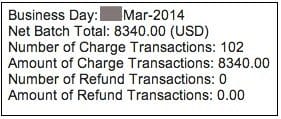
How long should your emails be?
https://youtu.be/0jVd-_31Af0
Discover how to create content that gets read and shared
Creating amazing content has nothing to do with raw writing talent or laboring over a draft for 8 hours a day. The best bloggers all follow a process to go from blank page to compelling blog post. These steps almost guarantee that anything they write will be read and shared.
Ready to improve your habits and level up your life? Download our FREE Ultimate Guide To Habits below.
Today’s question is from Srinivas. He asks:
“I am amazed at the length of emails you send regularly. What are the systems you set up to write content, email, and newsletters at regular intervals?”
OK. First, I want to challenge you.
Do you need to write emails as frequently as I do? No. That’s my style. I like writing. I like staying in touch.
Other people write super-short emails. Take Seth Godin — he writes blog posts that are very short, and he writes them every day.
But Mark Manson, another popular writer, writes one to two posts per month that are long and detailed.
You want to find the groove that works for you.
Then, whatever you choose, I have a 3-step system to help you never run out of ideas, crush the blank-page blues, and avoid feeling overwhelmed.
Let me walk you through each part.
Step 1: Keep a running list of ideas
The worst thing in the world is to sit down and experience blank-page syndrome.
It sucks! You sit there thinking, “I’ve got to get this email out in the next hour! I don’t know what to do!”
And under the pressure, you buckle and end up writing a bunch of garbage.
So I started to keep a list of ideas back in college when I wrote a comedy column.
And as I started writing more and more, I saw ideas everywhere. I saw them when I was eating at a restaurant or walking around.
Whenever and wherever an idea would come, I’d write it down on a notepad or in a text document.
After a few days of writing down ideas, the next time I sat down to write, I had five ideas to immediately get the ball rolling.
Step 2: Set up a regular time to write
The next step is to schedule your writing time.
The important thing is to be honest about what time is going to work best for you.
I’m more creative in the morning, so I set three time slots on my calendar throughout the week. That way I wake up, and I’m ready to go. Boom!
Step 3: Don’t try to write 6 months of emails in a month
During your writing time, it’s important to focus on the work that’s going to benefit you the most at that moment.
I used to hear from friends who were working on next April’s post in January. I’m like, “What?”
To tell you the truth, I’ve never done that. It’s better to focus on nailing the emails going out next week. Make them something you’ll be proud of when you hit “send.”
Your readers will love that more than a pipeline full of messages that are half-baked.
Let timing dictate how long your emails are
With that said, we write emails that go out about three to four times per week. Our emails are a mix of really long, meaty posts, and then sometimes we send something short and fun.
Whatever your email frequency, the important thing is to get in the mind of your reader.
If you’re sending something out on a Monday, it could probably be a little bit meatier. If it’s Friday, readers are not going to be reading War and Peace. They want a link to some Instagram picture.
Think carefully about the emotional experience of your readers, too. I mean, do you want to eat a 10-course meal every single day? No. Sometimes you want some Taco Bell. That’s fine. So you really want to mix up and vary it, and keep it fresh.
These are the ways that we engage our readers. Personally, long is great for me, so I lean more that way. If you do short, then go look at the people who have mastered that.
For example, Seth Godin has some kind of “Aha!” insight in every post. He’s not just saying, “Today, I ate celery and asparagus. See you later!”
And if you write long, make sure that’s it’s equally engaging. It’s very difficult to get people to read really long posts unless they’re amazing.
Discover how to create content gets read and shared
How do you write that amazing content every time, whether it’s a short email or a long blog post? It has nothing to do with raw writing talent or laboring over a draft for 8 hours a day.
The best bloggers all follow a process to go from blank page to compelling blog post. These steps almost guarantee that anything they write will be read and shared.



